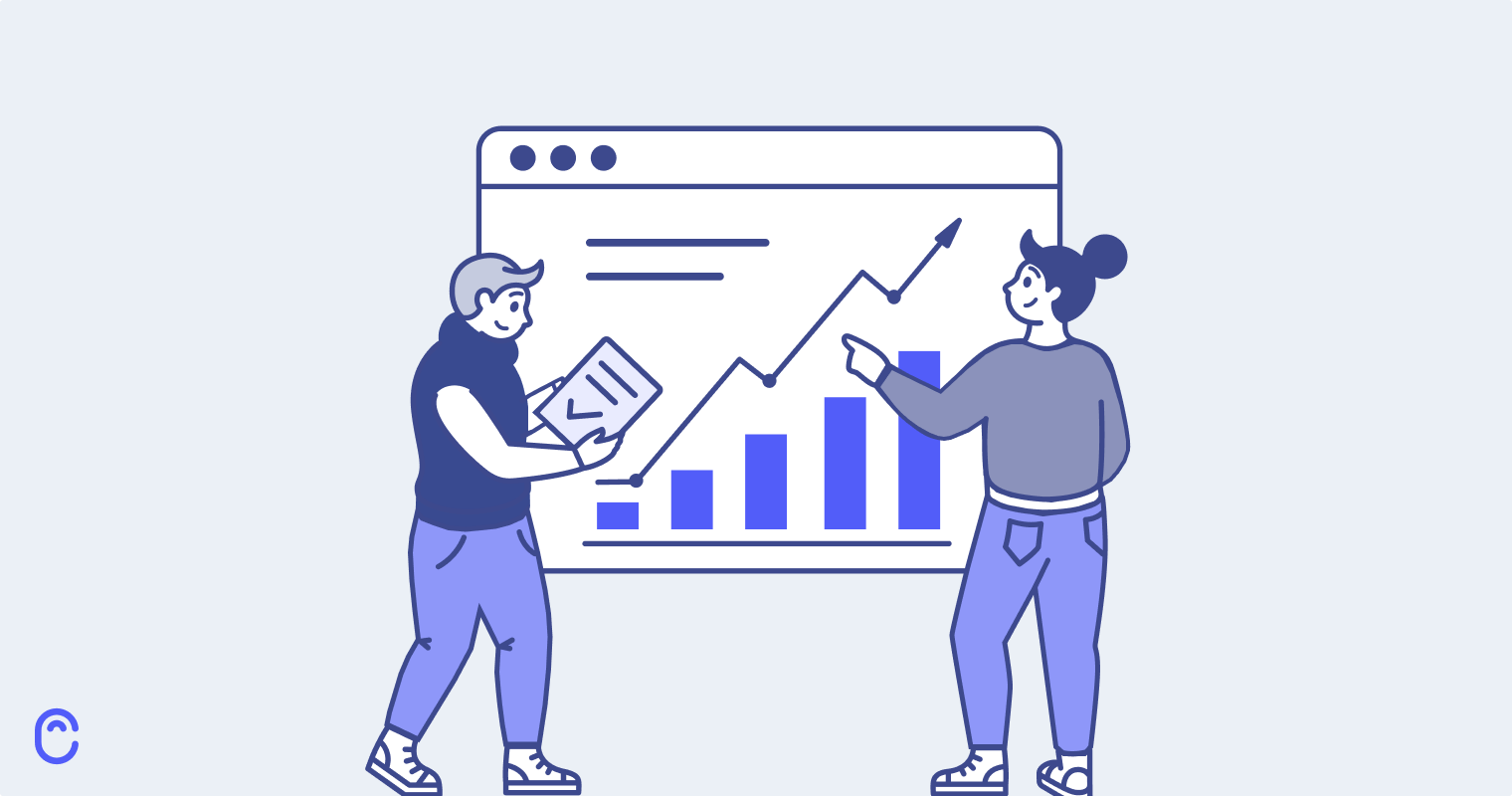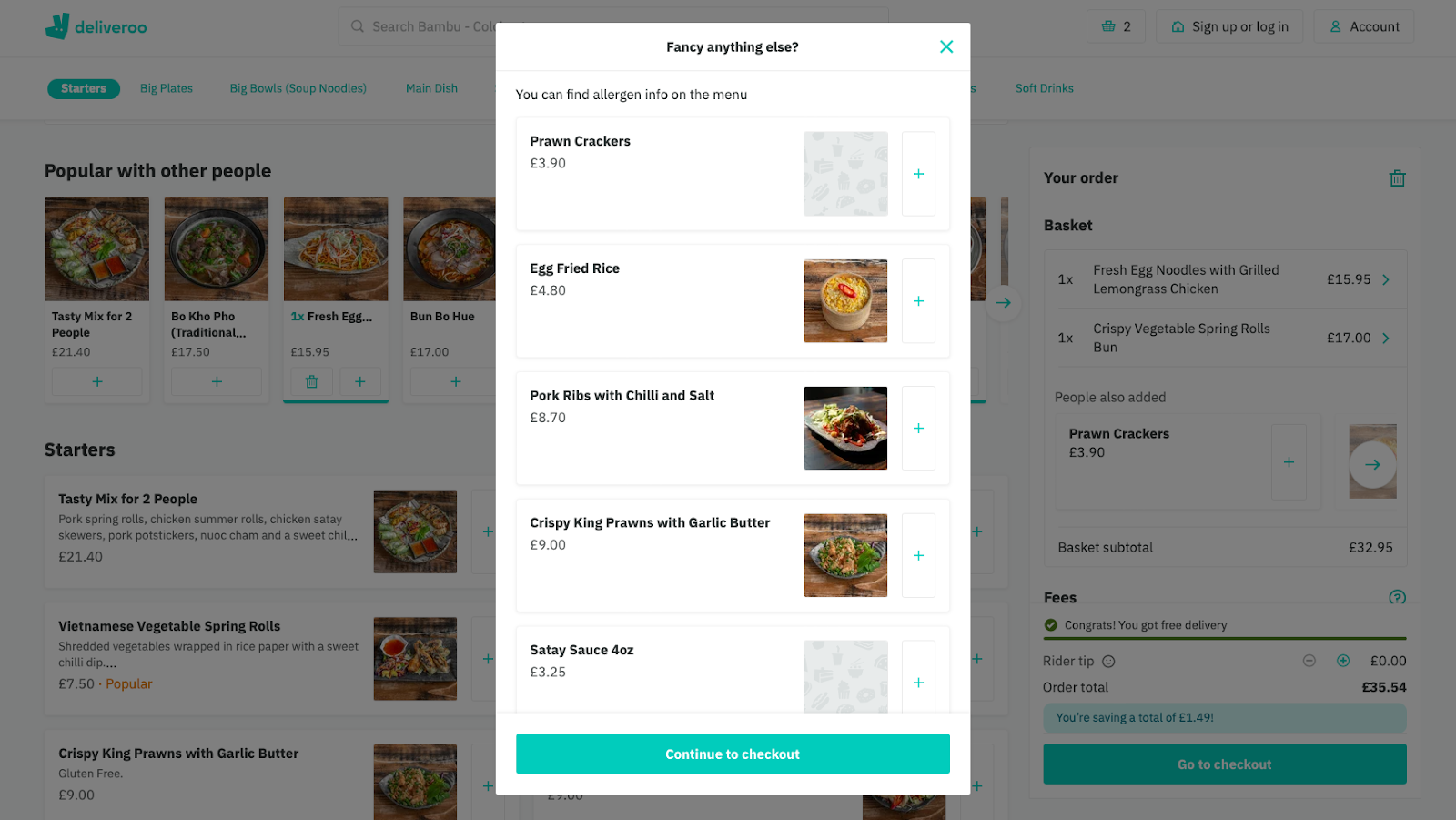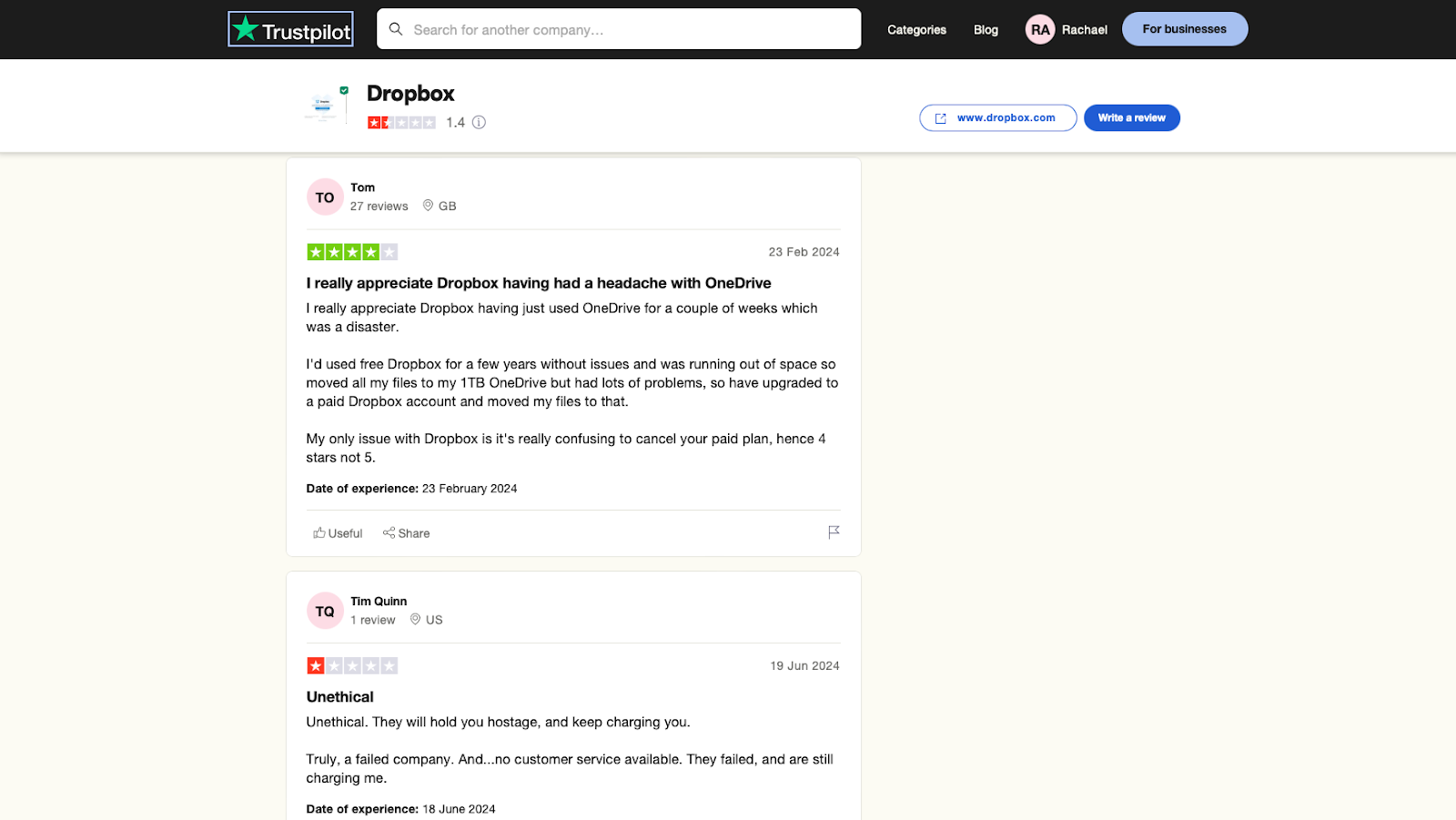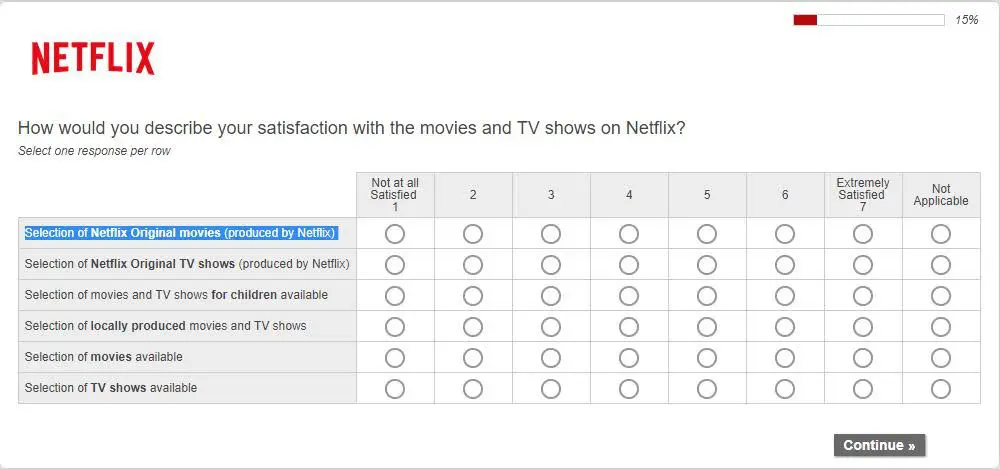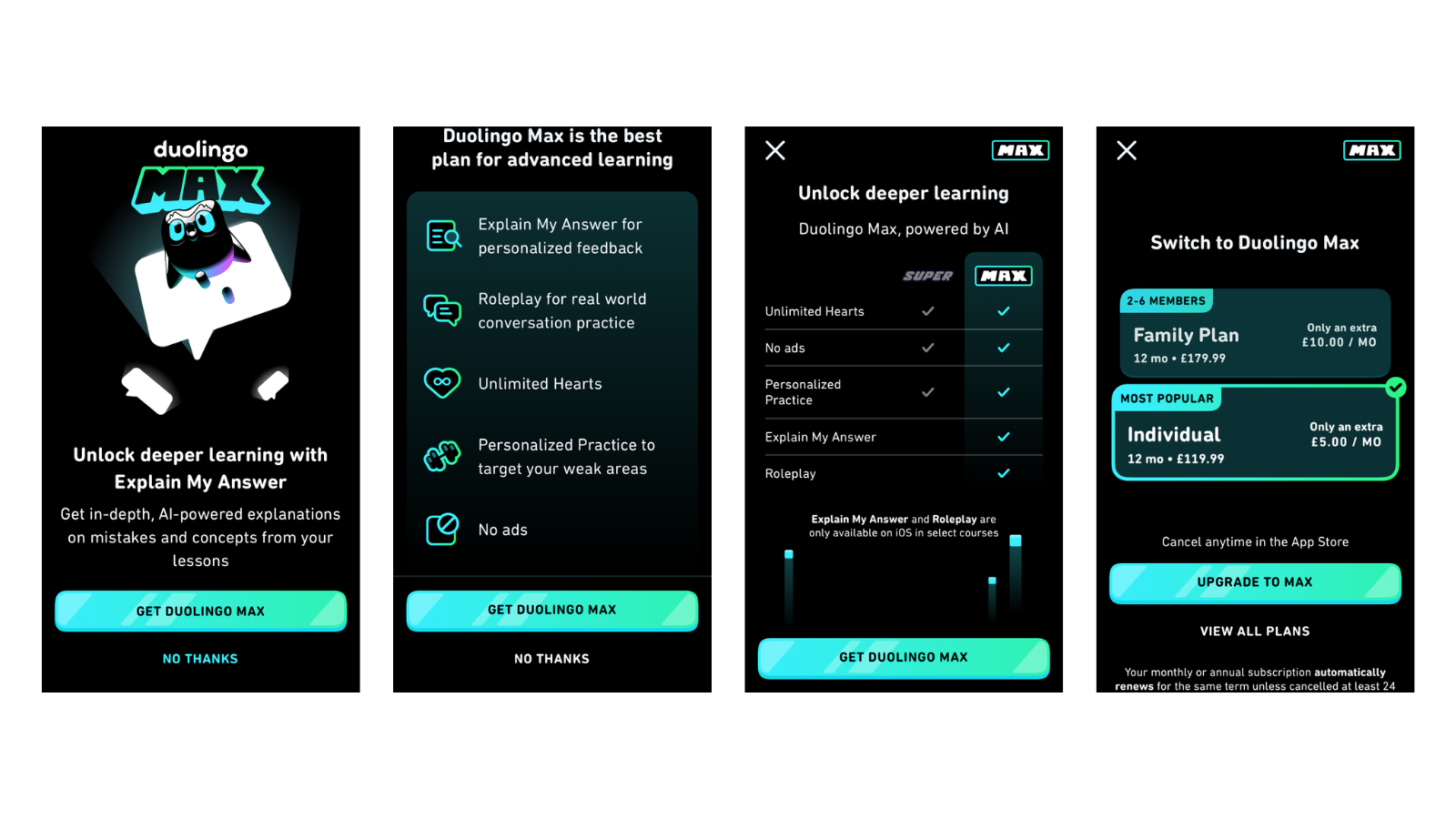Customer feedback provides you with a wealth of useful information for your business. For example, it can tell you:
- Where your customer pain points are
- How great your customer service is
- Which new products or improvements to develop
But did you know you can also use customer feedback when it comes to upselling opportunities?
Upselling is one of the best ways to make your business more profitable. One study even found that it can lead to a 10-20% increase in revenue. It boosts customer lifetime value (CLV) and lowers new customer acquisition costs. But the benefits don’t stop there.
Let’s explore how to use customer feedback to find opportunities for upselling.
Quick recap: what are upsell opportunities?
If you work in a sales team, you’ve likely heard the term ‘upsell’. The popular sales technique encourages customers to put more products in their carts. The aim is to increase the value of that sale.
For example, a customer might walk into a corner store for a pre-packaged sandwich. The cashier upsells an add-on product – a chocolate bar or a drink to go with their meal.
But that’s a simple example. Online, an upsell offer tends to be more high-value and high-stake.
A sales rep might use their CRM or sales software. Current customers who already use one product represent perfect upselling opportunities.
In this setting, companies draw on customer data. They look at previous buys and popular products to make product recommendations. This increases the chances of a sale. It also improves the customer experience by making interactions more personalized.
Deliveroo is one tech platform that uses this tactic. After a customer places an order, a pop-up box suggests more menu items.
This is a good way of increasing the order value, allowing customers to add extra dishes at the last minute.
What makes customer feedback so valuable for upsells?
Customer feedback is a goldmine of information. It’s also the starting point for identifying upsell opportunities.
Don’t go into upselling by guessing what products might catch users’ attention. There’s no point in creating upsell offers that don’t resonate with users or meet their needs. Regardless of where customers are on their journey, listen to them. Use their feedback to guide your strategy.
Let’s look at a few benefits:
1. Figure out what’s popular and why
Do the majority of buyers use a particular feature of your SaaS platform? Do they value the gamification features over anything else? Do they prefer the desktop version or the app?
Feedback is the only way you can answer these questions. Studying buyer behavior on a larger scale is crucial here. It means you can catalog the solutions that deliver benefits for businesses. Then, you can find the most successful upsell opportunities.
To gain these insights, your product team must practice excellent feedback management.
This is the best way to ensure all team members have access to feedback insights to take action. AI-powered feedback management tools like Canny Autopilot automate this process. AI helps to sort feedback, summarize it, and gather insights in one spot.
Once you have these insights, you can analyze them for patterns. Identifying the most popular products and features gives you a foundation for upselling. Showcasing bestsellers alongside positive reviews persuades other customers to make a buy.
2. Analyze negative feedback
You can’t please everyone. And it’s tempting only to take on board positive feedback.
But listening to what customers don’t like can lead to improvements. It helps fine-tune your offer to increase product quality and customer satisfaction.
Survey questions allow you to capture customer opinions about products and services. You can send surveys via email or live chat. You can also ask for direct feedback over the phone. Customer reviews and social media can give you great insights, too.
Looking at all these together makes it easier to spot patterns. There might be a user issue, such as slow loading times. Or there might be issues with your product pricing structure.
Regardless, analyzing that feedback lets you turn negatives into positives.
3. Pinpoint customer needs
Customers come to you because they hope you can fulfill a need. The better you address customer needs, the more customers you’ll keep.
The same principle applies to customer expansion. New customers will see reviews from loyalists praising your brand. This encourages newcomers to trust you and try your products.
Track client feedback to identify and address customer needs. Customer reviews are a goldmine. Satisfied customers may share how your solution solved a specific pain point. They can also help you identify gaps you can fill with product or feature add-ons and upgraded plans.
For example, one recent Dropbox review shows a customer needed more storage space. They were even willing to upgrade to a paid account to get it. This feedback shows you which customer needs are worth prioritizing and upselling.
Negative customer reviews can do the same. Most Dropbox feedback highlights a lack of customer service and issues with subscriptions. This demonstrates a need to better manage these parts of the SaaS provider’s operations.
Why use customer feedback to further your upselling goals?
Reading through piles of customer feedback in search of upsell opportunities is time-consuming. But it’s worth it to drive more high-value sales. Tools like Canny’s Autopilot automate the process with the help of AI.
This saves your team significant time by sifting through communication channels. You can see takeaways at a glance by removing duplicates and summarizing comments.
Here’s how those takeaways help you:
Improving customer loyalty
Using customer feedback to inform your upselling techniques improves product quality. It means you can provide customers with a better experience that matches their needs.
It also shows you’ve listened to customers. That’s likely to make them happier, and happy users drive customer loyalty.
Netflix uses customer feedback to generate content creation ideas. It’s a tactic that keeps existing customers coming back for more. The result is new and exciting content that always appeals to viewers’ interests.
The streaming platform also uses feedback to improve the accuracy of its recommendations. When customers complete surveys, the platform suggests content in line with their answers.
Driving customer engagement
One of the best sources of qualified upsell opportunities is active customers. These are people who engage with your brand. They’re already responsive to you, so it’s worth pursuing them when it’s time to upsell a new product or upgrade.
Duolingo’s customer engagement strategy revolves around gamification. The idea is to help users learn languages more effectively. App users can issue immediate feedback by submitting reports. Duolingo uses these to improve its algorithm and AI-powered teaching methods.
With that information, they can then upsell new features that drive more engagement. For example, the “Explain my answer” button lets users learn why their answer was incorrect.
Upgrading to Duolingo Max unlocks this feature alongside Role Play capabilities.
Collecting data
Processing customer feedback means collecting and working with large amounts of data. When you analyze it, you can find ways to upsell more and make customers happier.
The best part of working with data is that you don’t always have to do it manually. Instead, you can rely on AI-powered feedback management tools.
Automation lets you summarize conversations. This makes it easy to understand your customer’s needs. As a result, you can yield actionable insights, including upsell opportunities.
By organizing your customer feedback, you can identify loyal customers. Then, you can see which features are most important to them. This will allow you to target them with exclusive upgrades to reward their loyalty.
You can also identify common customer pain points to help you plan for the future. You’ll understand which new features are in demand and where to focus your upselling.
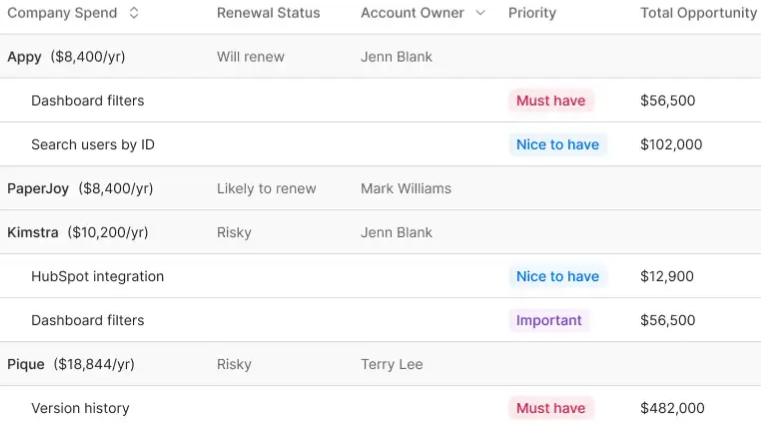
It’s not only about automated tools, though. Building a poll is a great tactic for engaging customers and gathering data.
This method enables you to ask targeted questions relevant to potential upsell opportunities. The result is even more potent data collection efforts. For example, you might poll trial users about the top features they’d be willing to pay for. Or you could poll existing customers about specific features they value most.
Best practices to help identify upsell opportunities
As with any strategy, upselling requires a tailored approach. So, other than gathering customer feedback, how can you guarantee conversions?
Here are a few best practices:
1. Segment customers
Segmenting customers is a great place to start. Conduct a customer journey analysis. Mapping the customer journey helps you identify milestones. These are moments for natural upselling opportunities.
Part of this analysis also includes dividing customers into segments. This could be demographics or preferences. But it can also be purchasing behavior, time spent on the app, or usage limits. Use this data to tailor upsell offers to specific groups at specific times. Make sure it’s based on their needs and feedback.
So, what does this look like in practice? Let’s say you sell call center software. You want to upgrade more IP phone system users from the Basic to Premium plan.
Your strategy might include:
- Segmenting Basic plan customers to identify the longest users.
- Conducting an NPS survey to identify loyal customers.
- Identifying Basic plan users who have reached their usage limit.
- Using their feedback to identify their needs and preferences.
Then, seize the upsell opportunity. Personalize an upgrade offer or highlight related products to solve their pain points. It’s also worth sharing positive reviews from Premium customers to seal the deal.
2. Make the most of data
Buying history, usage data, and customer feedback all inform your upselling strategy. So use this data to your advantage.
Analyze past purchases to find patterns and predict future buying behavior. Segment customers who have made similar purchases. Then target them with complementary products or upgrades.
Check how customers use your product, too. This is particularly beneficial if your product is usage-driven or subscription-based. Usage data indicates users who are ready for an upgrade.
Use digital tools to make this process efficient. That could be sales enablement tools or feedback management software. Either way, it should help analyze feedback, identify upsell opportunities, and drive sales.
Look for tools that integrate with other systems too, particularly your CRM. This makes it easier to track feedback and customer interactions.
3. Target users with growth potential
There’s no point in upselling to disgruntled customers. Yes, feedback from them is invaluable. It’ll help you identify product improvements and extra features. But a customer who doesn’t feel your product meets their needs is unlikely to upgrade.
For your upsells to be successful, you need to identify the right customers. That might mean satisfied individuals who have used your products for a long time. But it’s also about larger companies that have growth potential.
Use your CRM and integrated systems to find these customers. You might have all this data at hand. Or you might need to survey customers to get a better idea of their needs.
What makes a good upsell potential will differ based on your business model. In particular, it will depend whether you charge by user or not.
For example, let’s say a large company has 10,000 employees. But only 2,000 of them use your solution. That’s a great opportunity to onboard another 8,000 users.
Other potential customers to target include international corporations. What if team members from one location or department use your product? How can you upsell to the rest of the company?
What about budget? There may be an account with a significant amount to spend. Consider how much they spend on your solution compared to similar sized accounts. Is there scope to upgrade their account or offer them add-ons?
Listen to learn
Listen to what your customers are saying. Their feedback lets you identify upsell opportunities with ease.
Upselling helps you boost CLV while promoting new products. At the same time, it shows that you’re paying attention to customers’ needs. As a result, you can respond with tailored recommendations.
So, in the end, your reputation and bottom line go up. It’s a win-win!


